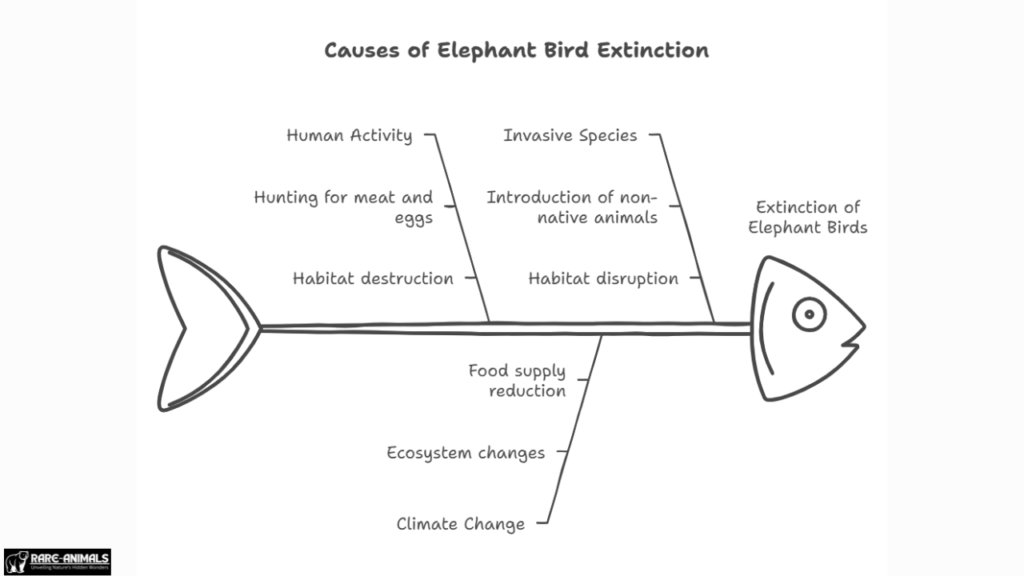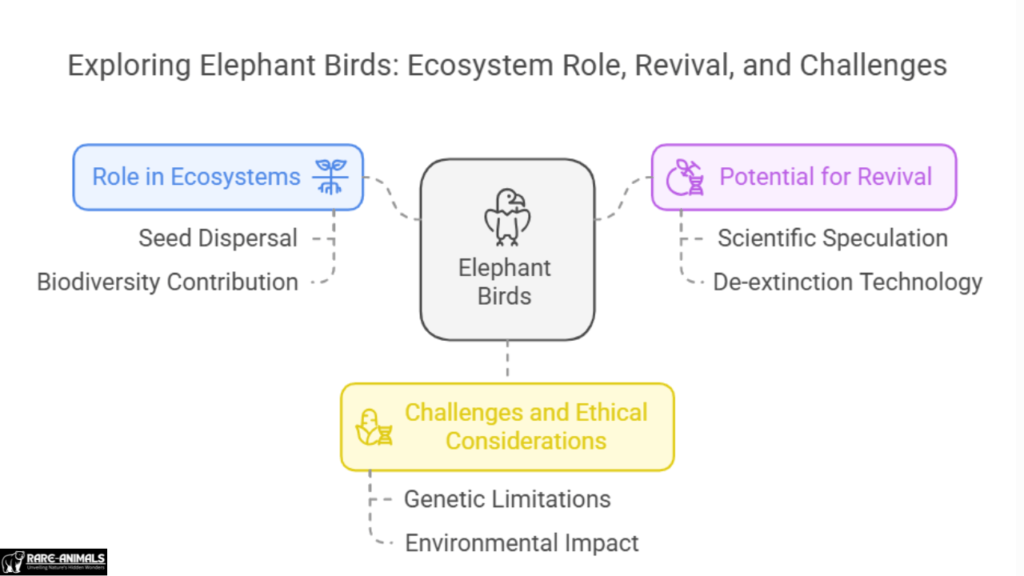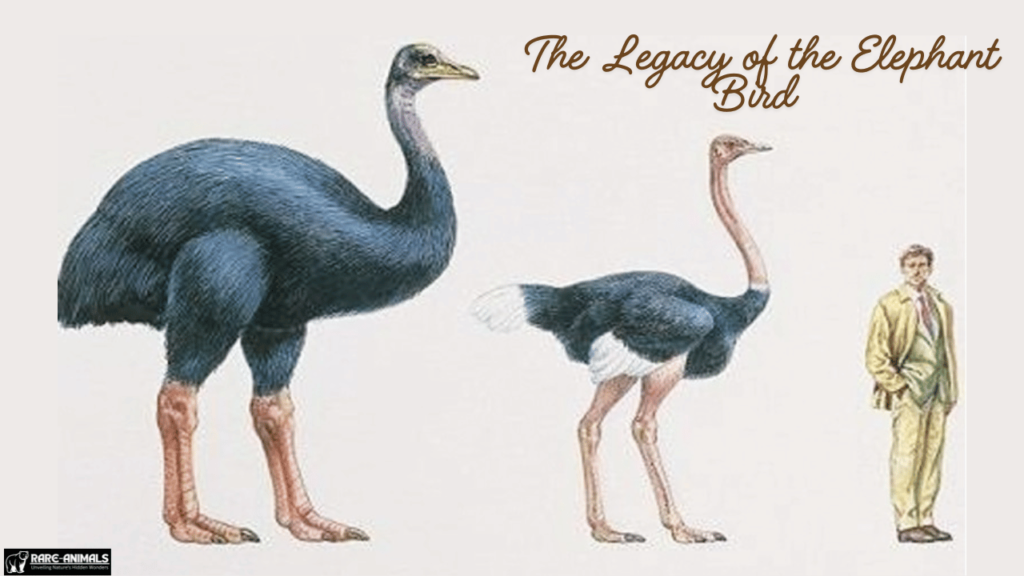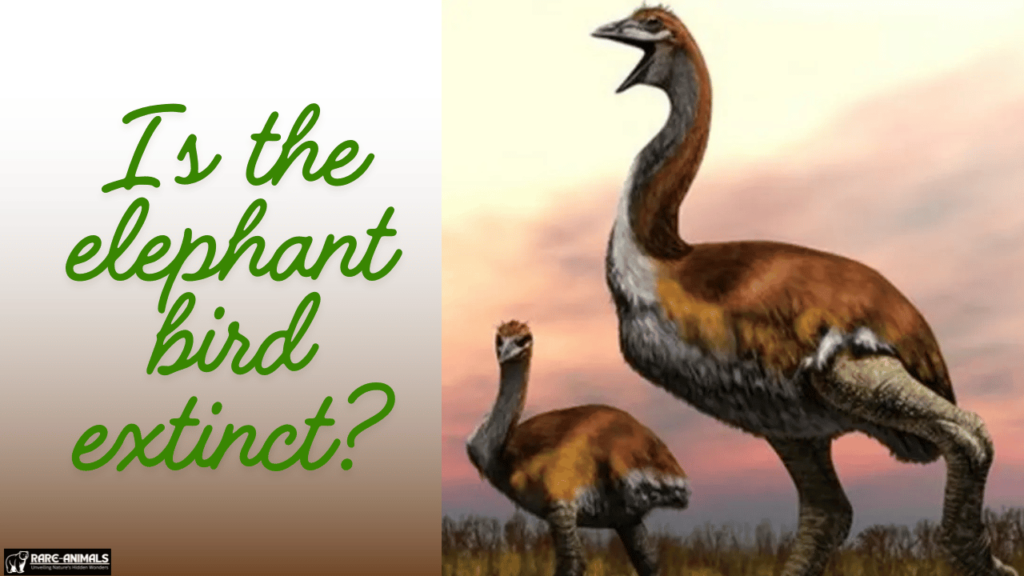The elephant bird, an awe-inspiring giant that once roamed Madagascar, is now considered extinct. These flightless birds, belonging to the Aepyornithidae family, were among the largest birds to ever exist. But what led to their disappearance?
In this article, we explore the elephant bird’s history, extinction causes, and ongoing scientific discoveries that continue to intrigue researchers and wildlife enthusiasts alike.
What Was the Elephant Bird?
The elephant bird was a genus of large, flightless birds native to Madagascar. It could reach up to 10 feet (3 meters) in height and weigh over 1,100 pounds (500 kilograms).
Key Characteristics
- Size: Among the heaviest birds ever recorded.
- Diet: Primarily herbivorous, feeding on fruits and foliage.
- Eggs: Laid the largest known eggs, even bigger than those of dinosaurs.
Species of Elephant Birds
Some notable species include:
- Aepyornis maximus – The largest and most well-known species.
- Mullerornis agilis – A smaller, more agile relative.

Causes of Extinction
Elephant birds disappeared around the 17th century, and several factors contributed to their extinction.
Primary Causes
- Human Activity:
- Hunting for meat and eggs by early settlers.
- Habitat destruction due to deforestation and agriculture.
- Climate Change:
- Changes in Madagascar’s ecosystem affected their food supply.
- Invasive Species:
- Introduction of non-native animals disrupted their habitat.
Scientific Discoveries and Ongoing Research
Despite their extinction, elephant birds continue to fascinate scientists. Fossil discoveries and DNA analysis provide new insights into their biology and evolutionary history.
Recent Discoveries
- DNA Sequencing: Studies suggest their closest living relatives are kiwis from New Zealand.
- Eggshell Analysis: Provides clues about their diet and nesting behaviors.
The Role of Elephant Birds in Ecosystems
These birds played a crucial role in seed dispersal, contributing to Madagascar’s biodiversity.

Could the Elephant Bird Be Revived?
With advancements in de-extinction technology, some scientists speculate about the possibility of bringing the elephant bird back to life.
Challenges and Ethical Considerations
- Genetic Limitations: Recovering viable DNA remains a major challenge.
- Environmental Impact: Would reintroducing such a species disrupt current ecosystems?
The Legacy of the Elephant Bird
While extinct, the elephant bird remains a cultural icon in Madagascar and a subject of scientific interest worldwide.

Cultural Significance
- Featured in Malagasy folklore and legends.
- Often compared to the mythical “Roc” bird from Arabian Nights tales.
FAQs
Q1: When did the elephant bird go extinct?
A: The elephant bird is believed to have gone extinct between the 16th and 17th centuries.
Q2: How big was the elephant bird’s egg?
A: The eggs could measure up to 13 inches (33 cm) in length and hold over 2 gallons (7.5 liters) of liquid.
Q3: Why did the elephant bird go extinct?
A: Human hunting, habitat destruction, and ecological changes contributed to their extinction.
Q4: Can the elephant bird be brought back to life?
A: De-extinction efforts are being explored, but ethical and technical challenges remain.
Q5: Where can I see elephant bird fossils?
A: Fossils are displayed in museums such as the Natural History Museum in London and Madagascar’s national museums.
Conclusion
The elephant bird, though extinct, continues to capture our imagination and scientific curiosity. Understanding its history helps us learn valuable lessons about conservation and biodiversity. To further explore and support wildlife conservation, consider visiting educational centers and participating in preservation initiatives.
Want to learn more? Share this article and help raise awareness about extinct species and the importance of conservation.

Alveena is an experienced content writer with a knack for crafting engaging and insightful pieces. She thrives on breaking down complex ideas and presenting them as clear, captivating content that resonates with readers.







